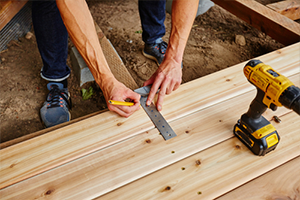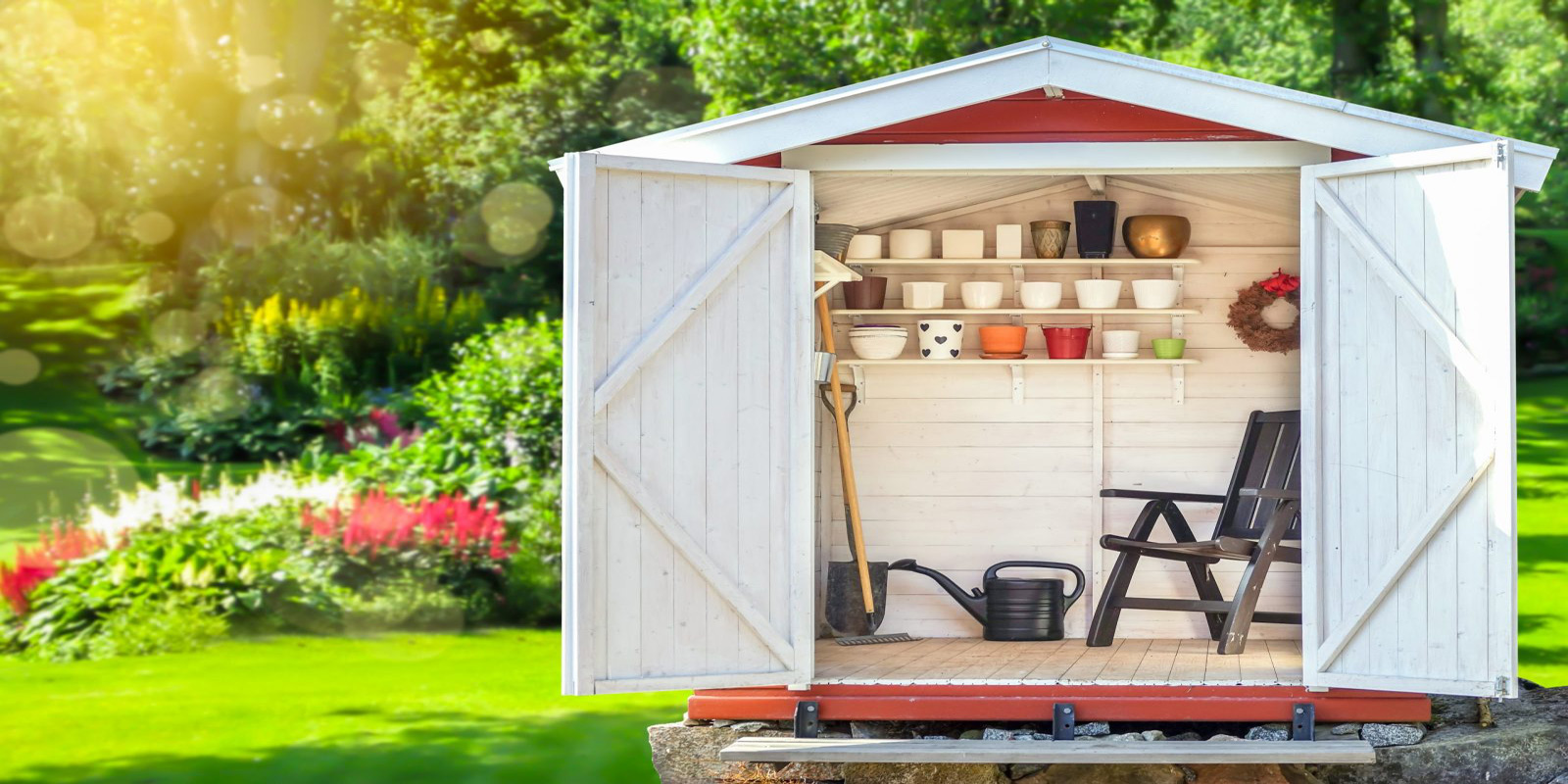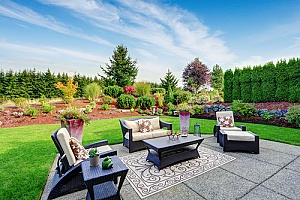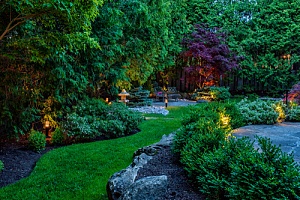 Most people want their back yard to be a restful place, a peaceful spot to retreat from the noise and busyness of their daily lives and enjoy their own slice of the great outdoors. While any well-kept yard is nice, sometimes you need more than a flat expanse of grass. A Japanese garden is ideal, because it is designed for the sort of peaceful meditation and relaxation you need. Even if you already find your yard to be the most peaceful spot in your home, a Japanese garden is beautiful enough to entice any DIYer. When most people think of Japanese gardens, they picture austere rock gardens. While that is one form of Japanese gardens, it is far from the only one. Moss and pond gardens are also popular, and they can be more visually interesting. For many people, the added greenery and water features are more visually appealing and more relaxing than rocks and sand. Here is a brief guide on how to create a Japanese garden in your lawn.
Most people want their back yard to be a restful place, a peaceful spot to retreat from the noise and busyness of their daily lives and enjoy their own slice of the great outdoors. While any well-kept yard is nice, sometimes you need more than a flat expanse of grass. A Japanese garden is ideal, because it is designed for the sort of peaceful meditation and relaxation you need. Even if you already find your yard to be the most peaceful spot in your home, a Japanese garden is beautiful enough to entice any DIYer. When most people think of Japanese gardens, they picture austere rock gardens. While that is one form of Japanese gardens, it is far from the only one. Moss and pond gardens are also popular, and they can be more visually interesting. For many people, the added greenery and water features are more visually appealing and more relaxing than rocks and sand. Here is a brief guide on how to create a Japanese garden in your lawn.
Less is More
A true Japanese garden is all about simplicity and purpose. Keep the number and variety of plants fairly small. Focus more on green things- mosses and crawling plants, especially. Flowers can be included, but be careful not to overdo it. Green is the most commonly used color. Designs for Japanese gardens emphasize simple lines without much visual clutter. Japanese gardens are sparsely planted, and the space between and around the plants is just as important as the plants. Small stone pathways are a nice touch too. A bamboo fence is a good idea for a garden that will only use a portion of the yard. Everything in the garden should have a purpose for being there aside from being aesthetically pleasing.
Plant Some Japanese Maples
These are relatively small, but incredibly beautiful trees. They are particularly stunning in autumn, when the leaves change color. Since Japanese gardens borrow from the surrounding landscape, a good way to use these trees is as a way to frame a beautiful view of the surrounding area. Even before autumn, the green leaves and pink stems make it a striking part of any garden. These trees grow slowly, and will not likely exceed eighteen feet in height. Planting trees may sound like a major expense for a home garden, but one or two should suffice.
In addition to framing views and providing beautiful foliage, the trees will also provide much-needed shade for the moss on the ground, which does not handle full, direct sunlight well.
Hard Landscaping
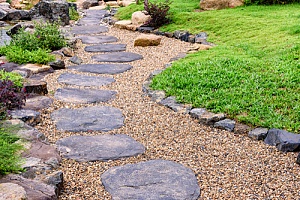 This is your fill dirt, gravel, stones, and other non-plant objects that go in the garden. For a rock garden, these are, of course, especially important. In a rock garden, the scenery represents mountains and rivers. Each rock represents a mountain, and the lines you rake in the sand represent the rivers flowing around them. To do this properly, you will need to use clean fill dirt or topsoil to level an area first, and then spread the sand in a layer on top of it.
This is your fill dirt, gravel, stones, and other non-plant objects that go in the garden. For a rock garden, these are, of course, especially important. In a rock garden, the scenery represents mountains and rivers. Each rock represents a mountain, and the lines you rake in the sand represent the rivers flowing around them. To do this properly, you will need to use clean fill dirt or topsoil to level an area first, and then spread the sand in a layer on top of it.
Even if you are not building a rock garden, the hard landscaping in a Japanese garden is vital. Gravel and stones are used throughout, and one of the most common visual aspects of a Japanese garden is a river of stones; it imitates a water feature and creates a striking look. You will also need gravel and stepping stones for a pathway through the garden, as much of the ground cover will be moss, and moss does not do well with foot traffic.
Different Colored Mosses
Moss is often the main plant used in Japanese gardens. Mosses thrive in Japan’s climate, but they will do well almost anywhere. You can get mosses in different colors, mostly various shades of green and grey. Green is the color palette, but that does not mean to aim for a monochrome green garden. Having different mosses in different shades of green interspersed throughout the garden is much more attractive than having the whole garden the same shade. Sheet mosses are the easiest to work with, and they can handle more foot traffic than most mosses, but they also struggle the most in direct sunlight. Hair cap and cushion mosses can handle more sunlight, although they still do not like direct sun.
Different Plants
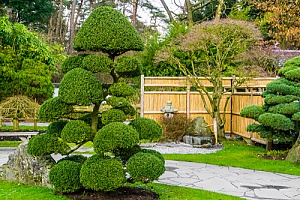 You will want several different plants in addition to the moss and maples. Different varieties and forest grass and mondo grass are good. Forest grass has a bright, almost yellow color and it will turn reddish in the fall; it should be potted, not planted in the soil. Mondo grass can be green or black; the black version makes a great contrast plant, and it grows purple flowers followed by black berries. Japanese lilies are the flower of choice, and can usually be found in yellow, pink, and white. Catmint will bloom with blue flowers in the summer. Azaleas are a good choice, too. In fact, they are essential to an authentic Japanese garden. They come in any color you could want, and any color is good. Remember to plant sparingly and thoughtfully. If you are buying a large variety of plants, buy only two or three of each unless your garden is going to be very large. Keep any grasses potted, since the moss should be providing the ground cover.
You will want several different plants in addition to the moss and maples. Different varieties and forest grass and mondo grass are good. Forest grass has a bright, almost yellow color and it will turn reddish in the fall; it should be potted, not planted in the soil. Mondo grass can be green or black; the black version makes a great contrast plant, and it grows purple flowers followed by black berries. Japanese lilies are the flower of choice, and can usually be found in yellow, pink, and white. Catmint will bloom with blue flowers in the summer. Azaleas are a good choice, too. In fact, they are essential to an authentic Japanese garden. They come in any color you could want, and any color is good. Remember to plant sparingly and thoughtfully. If you are buying a large variety of plants, buy only two or three of each unless your garden is going to be very large. Keep any grasses potted, since the moss should be providing the ground cover.
If you would like to speak to a contractor about fill dirt, topsoil, or land grading, contact Dirt Connections. The experts there will be happy to provide you with all the information you need.
My Premium Special Offers
For The New Standard of Excellence for DIY Chicken Coops!
You’re ready to reap the benefits of having chickens.
And you want to build your own coop.
But you know there are many different blueprints on the market.
So you need the right one.
And you’re eager to finally start living an eco-organic lifestyle.
Raise your own Cluck Norris and Yolko-Ono.
Have your own farm fresh eggs.
Every. Single. Morning.
But you need a simple place to start.
Announcing: The World’s Largest Collection Of 16,000 Wood Plans
Each of the 16,000 projects are detailed enough to leave nothing to guesswork, yet simple enough for beginners.
